In this buying guide, we tell you how to choose the best True Wireless (TWS) headphones.
Bluetooth wireless headphones are one of the best-selling technological products thanks to the improvement in the quality and stability of their connections. Due to their design, comfort or the good sound quality they offer in such a compact size, True Wireless or totally wireless headphones have been a revolution in the Bluetooth headphones segment.
How to choose the best True Wireless (TWS) headphones?
Companies like Apple, Sony or Samsung have invested heavily in the development of this type of ultra-portable headphones, creating a new category that is breaking all sales estimates, relegating their wired counterparts to the background.
This display of different technologies applied to such a relatively new device has made it increasingly difficult to buy the True Wireless headphones you really need. In this True Wireless headphones buying guide we tell you everything you need to know to choose the right headphones for you.
- Best noise canceling headphones (2020)
- Apple will build a new plant to meet AirPods demands
- Almost all Bluetooth devices are vulnerable to a new breach
Bluetooth headphones vs True Wireless headphones
Thanks to the improvement in the transfer of audio data via Bluetooth, the eternal dilemma between wired headphones or Bluetooth headphones seems to have been changed by the dilemma that occurs when choosing between Bluetooth or True Wireless or totally wireless headphones.
A priori it may seem that both types of headphones are practically the same, but there are important differences between them that affect the way they are used and even their performance.
Headphones can be Bluetooth and not True Wireless, so it is important to differentiate between them.
Features of Bluetooth headphones
The Bluetooth headset in-ear conventional are wireless device with respect to the issuer, either your smartphone, music player, TV, etc. However, both headphones must be connected by a cable that is responsible for carrying the electrical signal that is transformed into synchronized sounds in each of the headphones.
Features of True Wireless headphones
On the other hand, True Wireless headphones lack the cable that connects both headphones, which is why they are also called totally wireless, because they are not only independent of the device that emits the audio, but they are also independent of each other regardless of the cable. Freedom squared.
Often this cable was used to integrate a capsule with playback and volume controls, a microphone, a small internal memory, the battery that powered the device, etc.
Not having that small “extra” space in the cable, forces it to be integrated into each of the headphones, so in some cases some features are even lost when opting for True Wireless headphones.
The positive part, undoubtedly, comes from the comfort part, since having a headset that does not incorporate any cables improves their experience of use since they do not move as much as there is no cable that pulls them when walking, when running or doing sports.
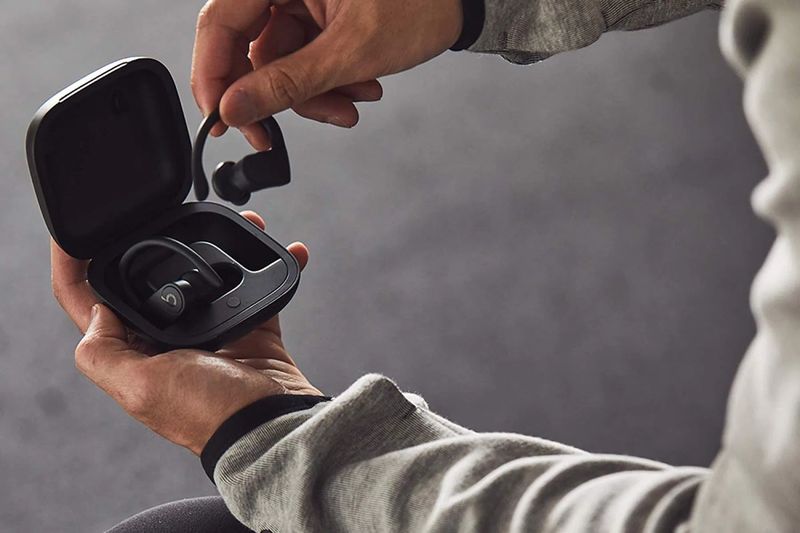
Ergonomics is a priority
The priority objective of this type of device is to make the user forget that they are wearing headphones, so comfort and ergonomics are especially important.
The great challenge faced by these minimalist headphones is to stay fixed inside the ear, using ergonomics as the only method of holding them to prevent them from falling out. In this mission it is essential to use the proper pads that fit correctly at the entrance of your ear canal and assume part of that fixation.
The need to fit like a glove in the ear so that the True Wireless earphones stay in place means that sometimes comfort can be compromised and users experience less fatigue when using them. But this is very subjective and depends on each user.
The only thing manufacturers can do is design their devices so that they can fit in the ear without moving, using materials that soften skin contact, such as rubber coatings or non-slip materials for the part that remains in contact with the canopy.
In this sense, two clear design trends emerge:
Button type: In which the entire earpiece is fixed in a compact piece that is limited to and hardly protrudes from the ear.
Pole type: Un this type of headphones the aesthetics of the long-lasting in-ear headphones are maintained, so that the components dedicated to the reproduction of sound remain inside the ear, but part of the electronics, such as microphones or systems of noise cancellation are housed in a kind of stick that is outside the ear.
As we have already said, manufacturers meticulously develop the inner face of True Wireless headphones to prevent them from moving when using it, therefore both are equally comfortable and, at least in most cases, should not move while being used.
This makes it especially necessary for something that, in the days of buying online, is really complicated: try them before buying them. The shape and sensitivity of the ear bud is almost like a single fingerprint, making it relatively easy for a headset to be uncomfortable because of its shape or the materials used and instead another model does.
Playback control with touch or button functions
Being able to control the volume or song that is playing without having to take the phone out of your pocket is one of the advantages of using wireless Bluetooth headphones. But if we have lost the playback control that the wired Bluetooth headphones integrated, how is it controlled in the True Wireless?
These types of headphones have changed the uncomfortable capsules hanging on the cable by touch surfaces integrated into the external part of the headphones or, in the case of the most affordable devices, in the form of integrated buttons.
These touch controls work by pressing on one or the other earpiece. Each manufacturer implements its own keystroke “code” so that, for example, one touch on the right earcup can stop playback, two touches can turn up the volume, or three touches go to the next song, while you touch on the earpiece left do the opposite function.
As we say, this is a function that is assigned by each manufacturer and can even vary depending on the model or the product range, limiting the functions, so it is advisable to read the instructions for use to know how each model is controlled.
The most affordable models save manufacturing costs by integrating physical buttons instead of tactile ones, although the operation can be equivalent in terms of the variety of actions depending on the number of keystrokes.
The most advanced devices have support for the Google Assistant or Siri integrated into the smartphone to which they are connected, so you can send voice commands through the headphones and run them on your smartphone without taking it out of your pocket.
In addition, the touch control, these wireless headphones incorporate an interesting function that stops the content playback when the sensors of the earpiece detect that it is not inserted in the ear. That way, you just have to take it off so that it automatically stops and starts again when you put them on again.

The Bluetooth version is more important than you think
In the same way that the octane number of the fuel used by your car or the quality of the water when making coffee matters, the version of Bluetooth that True Wireless headphones use is also essential to obtain the best experience of use.
Basic aspects such as battery consumption, audio quality, coverage distance or the ease with which you connect your headphones with your devices depend on the Bluetooth version that your headphones use.
Bluetooth 5.1 is the last version that was introduced in 2019, although the most widespread standard among the devices that are already on sale is Bluetooth 5.0.
This version of the Bluetooth standard was designed with Internet of Things devices in mind, making it especially well optimized for energy savings. That is, headphones that have this version will need less energy to transmit the audio data that must be played, taking better advantage of each milliamp of its battery.
On the other hand, this Bluetooth 5.0 version doubles the bandwidth available in the transmissions which, together with the development of better audio compression codecs such as that of Qualcomm aptX HD or LDAC, contributes to improving the quality of the transmitted audio, reducing the difference between high-fidelity audio transmitted with Bluetooth or cable.
In addition, having the latest specification of the Bluetooth standard extends the coverage distance and the stability of the connection, which can quadruple the distance you can be from the audio source before noticing loss of quality or cuts in the connection.
This also affects the ease of connection, since the latest Bluetooth standards allow you to connect to various devices, making it easier to switch devices, for example, stop listening to music from your smartphone to connect to your laptop without having to go back to sync them.
Pairing: With cables or cable free synchronization
The simple fact of doing without the cable that connected both headphones implies a much more profound change than it may seem since not only does it gain freedom of movement, it also means that both headphones can be synchronized independently.
There are generally two methods that most manufacturers have adopted: joint sync and double sync.
In the case of joint pairing, both earbuds are shown directly as a discoverable unit from the pairing menu of the smartphone or device without the user having to do anything other than move the device closer to the case to perform the NFC pairing or remove the headphones from their case to activate and select them from the connection menu.
This system is, without a doubt, the simplest because it is the most direct. You activate the headphones, they are shown as available in the Bluetooth connection menu of your device and with a touch they are linked. Enjoy them!
The second method, dual pairing, is very common among Chinese wireless Bluetooth headsets. Many of these headphones require both headphones to be synchronized with each other before pairing with the external audio source. Only in this way can they work together and synchronized.
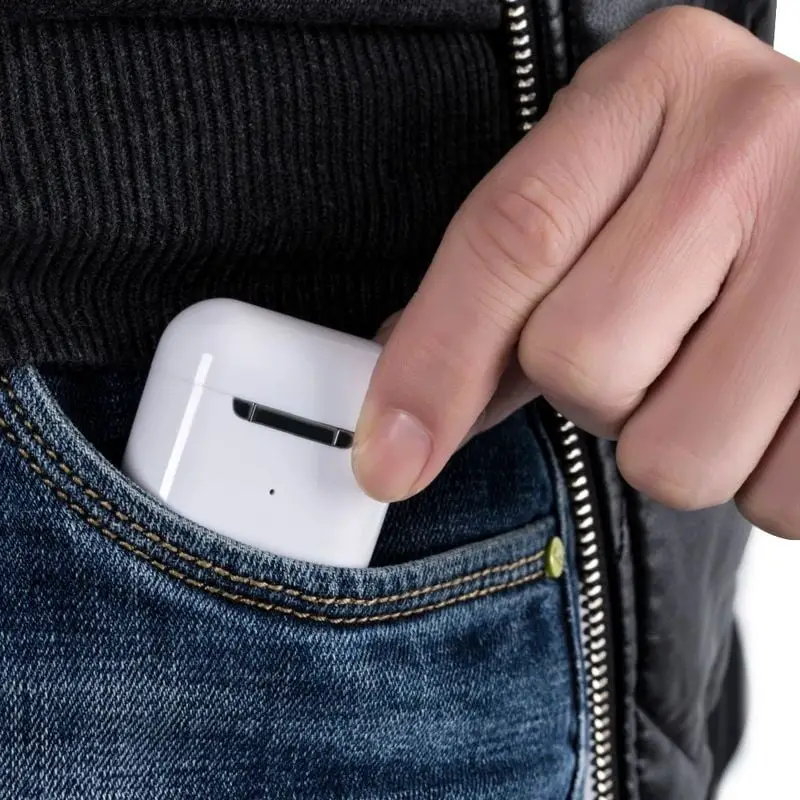
Therefore, before pairing these True Wireless headphones with your smartphon e, it will be necessary to synchronize the left earbud with the right. To do this, in many cases it is enough to hold down the touch zone of both headphones for a certain time. Each manufacturer can configure this synchronization slightly differently, so it is advisable to review the connection instructions before trying to link them on your own.
Why do some True Wireless headphones need this pre-sync? Well the reason is not that these headphones allow independent connections. In other words, each headphone is capable of managing its own connection to the sound source. This has several advantages such as reducing the latency that some models could present by increasing the points through which the audio signal should pass.
The independent synchronization allows to optimize the segregation of the audio of each channel in a more precise way since it is the device itself that sends the appropriate signal to each earphone, just as it does with the speakers.
This, in turn, allows you to synchronize True Wireless headphones independently, being able to use only one as a hands-free way to answer calls, and not have to use both, and even share a headset with a friend to listen to the same music wirelessly or make calls with multiple parties without being limited by one cable.
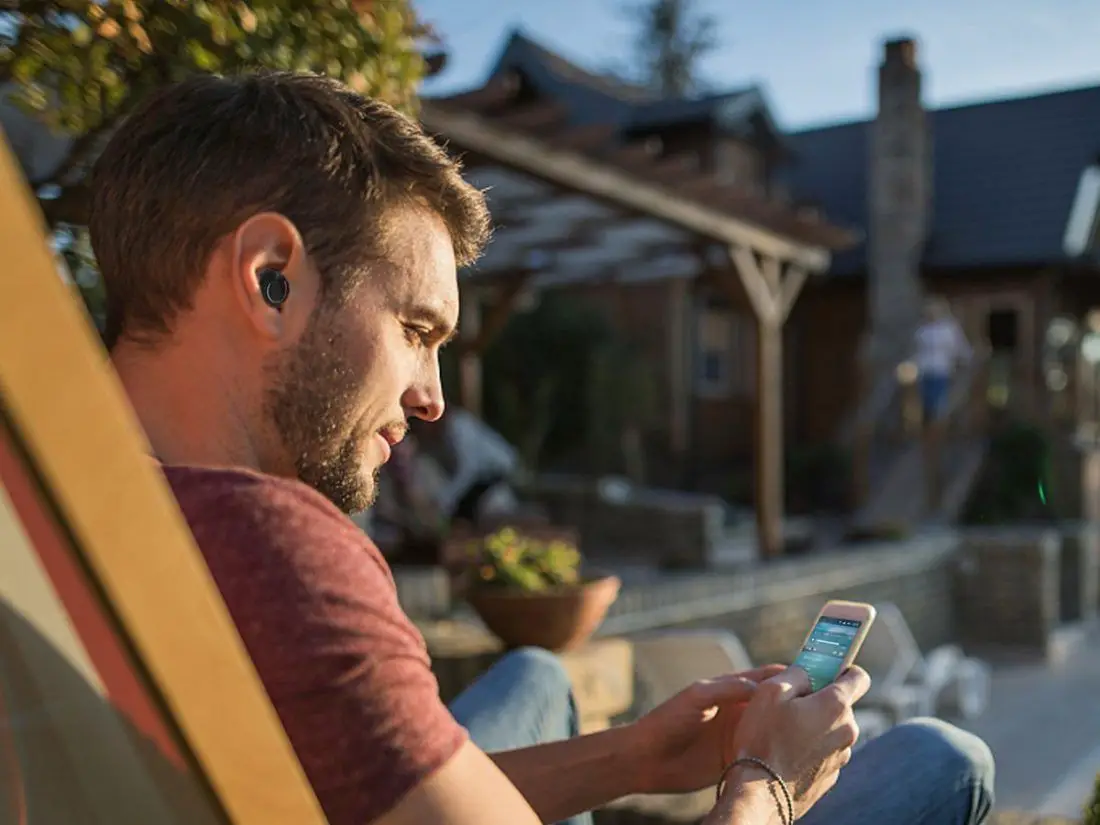
Noise-canceling headphones, the best thing for urban use
One of the main achievements of True Wireless headphones has been the incorporation of active noise cancellation technology to devices with such a small size, something that contributes to improving sound quality by not having to compete with external noise.
As its name suggests, active noise canceling headphones use a system of microphones and a specific chip to capture all external noise and emit a reverse wave that cancels them out.
Thus, when using this type of headphones, the user isolates himself from external noise and can concentrate on listening to his music without annoying interference. In addition to urban or noisy environments, these noise-canceling Bluetooth headsets are perfect for traveling by train or plane without the hassle of having a cable that limits your movements.
This feature influences the design of the earpiece since active noise cancellation technologies and passive insulation materials are combined to obtain the best results.
An example of the former is the integration of microphones to counteract the sound wave, while for passive isolation it is common to include memory foam pads that adapt to the ear canal, instead of using traditional silicone to achieve more insulation noise.
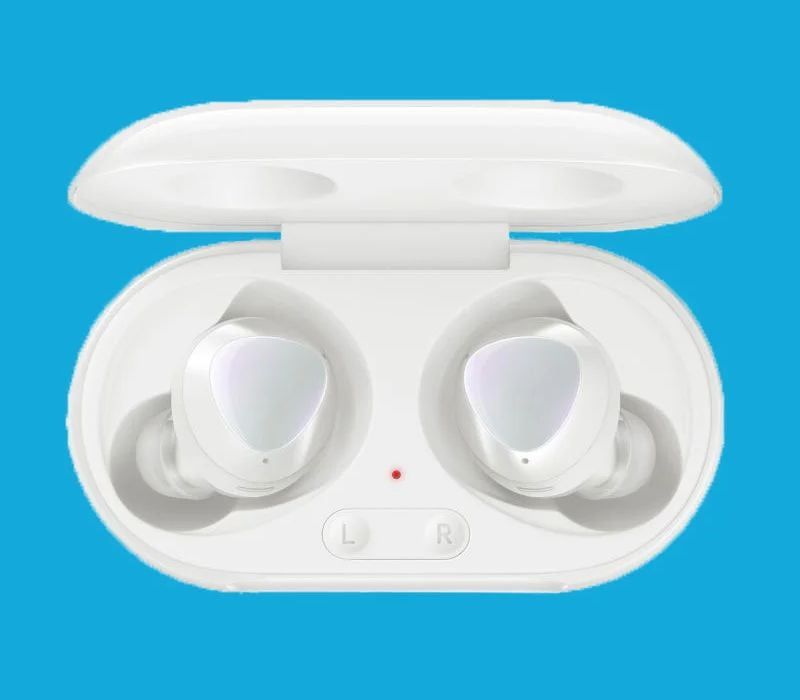
Incorporating this technology involves more components, so noise-canceling devices tend to be somewhat more expensive than those without this feature.
Noise cancellation is closely tied to circumaural headphones that cover the entire ear, so it is impressive to see the level of isolation achieved by integrated noise cancellation technologies in such small headphones.
Water resistance is now much more than just insulating components
By now all manufacturers know exactly how to make watertight devices so that they can withstand even pressurized jets of water. That is why, a priori, making sports headphones should not be a great effort.
However, its implications go beyond simply insulating the components, it can also affect the way of connecting depending on the degree of resistance to water.
For example, True Wireless sports headphones that can withstand sweat or splashes can use a separate timing system. This system consists of each earphone connecting directly to the audio source.
As we have already mentioned in the synchronization section, wireless headphones can be synchronized with each other in different ways: independently or together.
Being designed to work in water poses some additional challenges. Water is a poor transmitter of waves, so those sports Bluetooth headsets designed for swimming can experience micro-disconnections when the headset is underwater during the stroke if they don’t use an efficient connection system.
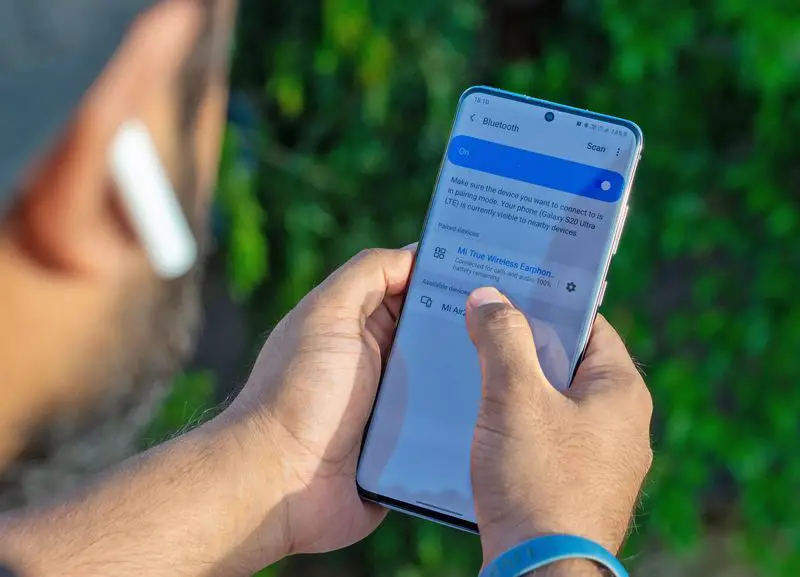
To avoid this, in addition to using an efficient joint connection system with the smartphone or external audio source, a dynamic connection system with optimized antennas is used, in which both earphones communicate with each other to detect which earpiece is out of the water and this is used to receive the Bluetooth signal.
Then, this handset sends the information to the handset that is submerged to avoid losing the connection at any time and thus they alternate the connection dynamically and in a matter of milliseconds so that the minimum cut-off or delay is not appreciated.
The key to get the best experience is autonomy and fast charging
All the features and benefits we’ve seen so far are fine, but without a battery to power them, wireless headphones are nothing more than expensive earplugs.
Therefore, one of the things you should take into account when buying a True Wireless Bluetooth headset is its battery capacity and, in addition, the capacity of its carrying case.
Eliminating the cable also eliminates the space occupied by the battery that, in many cases, was in charge of feeding the headphones, so manufacturers have been forced to integrate small energy storage units inside each one. of the devices.
Since space is very limited, and the weight works against it, the capacity of this battery is usually around 4 hours on average.
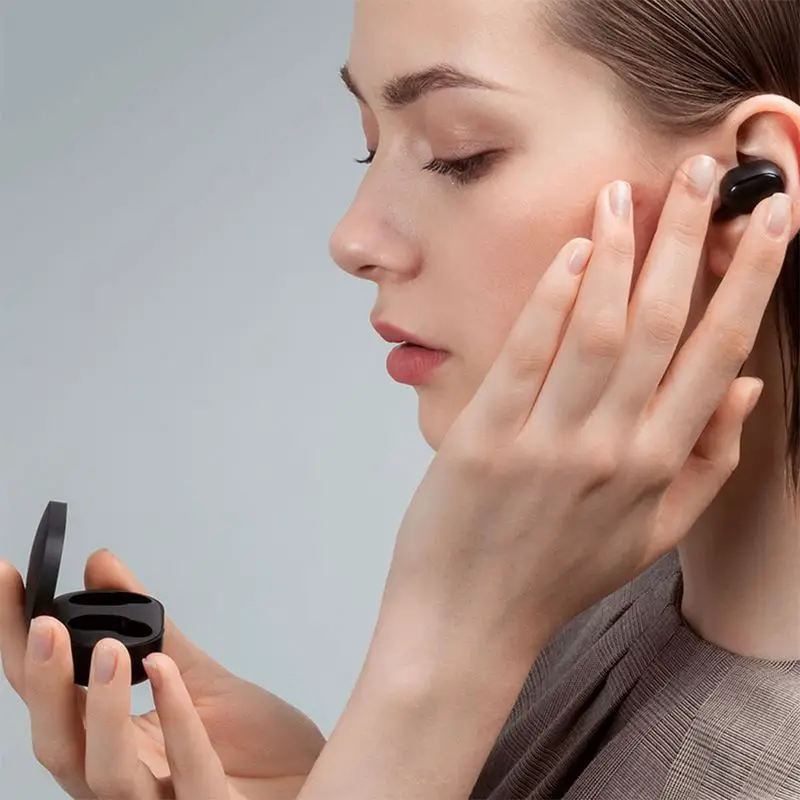
This is a relatively short time of use, so manufacturers have managed so that the impossibility of integrating a larger battery is not an impediment to having a good experience of use.
The headset carrying case is especially relevant to this strategy as it allows you to recharge your headphones anytime, anywhere so you don’t have to wait until you get home to continue enjoying your favorite music.
Therefore, when choosing True Wireless headphones you must take into account both the autonomy of use provided by the battery of the headphones, and the number of additional charges provided by their case.
In addition to extending its autonomy, the cases of some True Wireless headphones integrate fast charging systems that, in just a few minutes, allow energy to be recovered to function for a couple of hours.
This feature allows to extend, through short quick charges, the actual usage time. In the time it takes you to have a coffee, your headphones will once again be ready to provide you with a couple of hours of entertainment, instead of having to wait for 100% charge to be completed.





